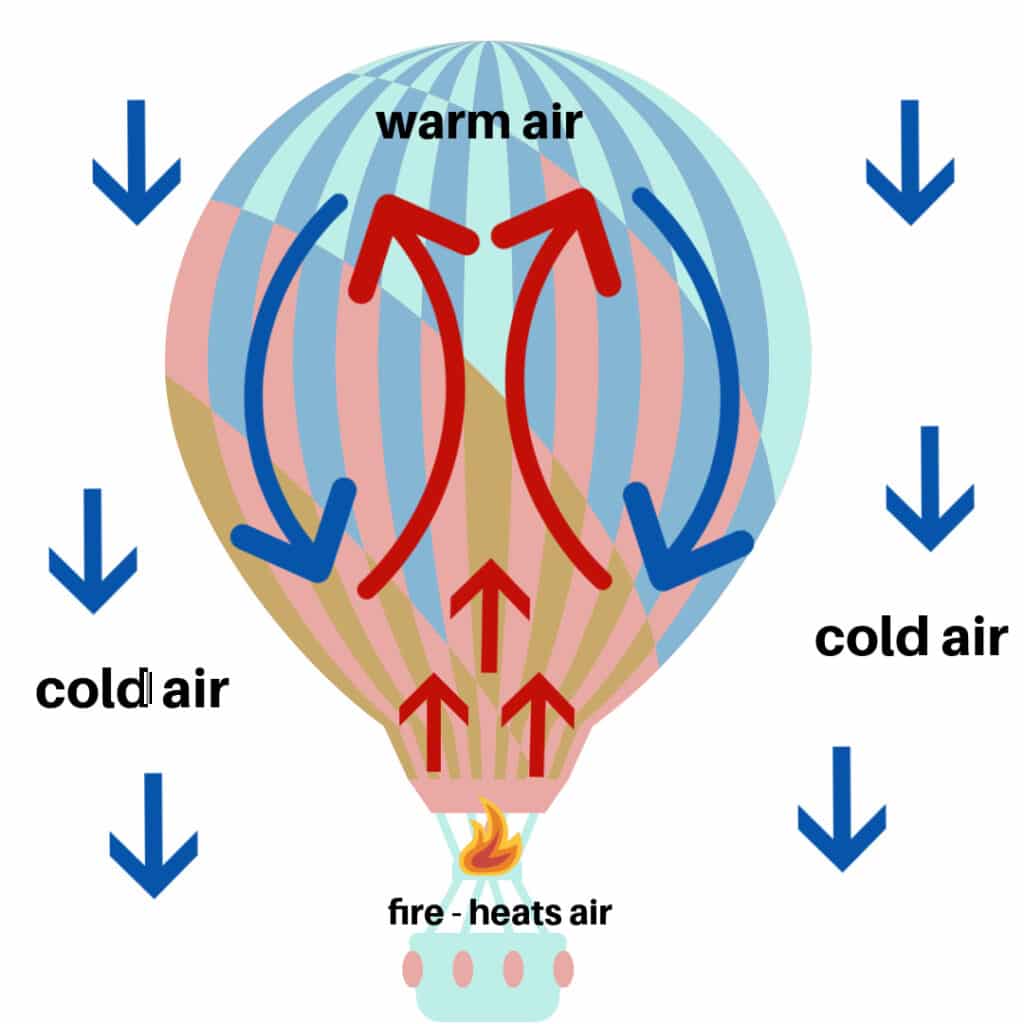
Have you ever wondered why a hot air balloon floats or why warm air feels lighter than cold air? The answer lies in the fascinating phenomenon of convection. This principle governs how heat moves through fluids like air and water, playing a crucial role in shaping our world from weather patterns to everyday experiences. In this article, we’ll delve into the science behind does hot air go to cold air, exploring its impact on various aspects of our lives.
This exploration will begin by examining the fundamental concept of density and how it relates to temperature. We’ll then dive into convection currents, understanding how they are driven by differences in air density. Next, we’ll see how these principles manifest in weather patterns, explaining why warm air rises and cold air sinks. Finally, we’ll explore how convection affects home heating systems and the movement of air within our homes.
Hot Air Density
At its core, does hot air go to cold air boils down to a simple concept: density. Density refers to how much mass is packed into a given volume. Generally, hotter objects have lower density than colder ones. This occurs because heat increases the kinetic energy of molecules, causing them to move faster and spread further apart.
Think of a balloon filled with hot air. The heated air molecules inside expand, taking up more space and becoming less dense compared to the surrounding cooler air. This difference in density creates an upward force on the balloon, causing it to rise. Conversely, colder air is denser because its molecules are packed closer together. This denser air tends to sink, creating a natural cycle of rising hot air and sinking cold air.
Factors Affecting Density
Several factors influence the density of air besides temperature. Humidity plays a role, as moist air is generally less dense than dry air at the same temperature. Air pressure also affects density; higher pressure compresses air molecules, making it denser. Understanding these factors helps us grasp the complexities of air movement and its impact on our environment.
Convection Currents
The continuous cycle of rising hot air and sinking cold air creates what is known as a convection current. These currents are responsible for transferring heat throughout fluids like air and water. Imagine a pot of boiling water; the heated water at the bottom rises, while cooler water from the top sinks to replace it. This constant circulation distributes heat evenly throughout the pot.
Convection currents occur on a much larger scale in our atmosphere. Warm air near the Earth’s surface rises, creating an upward flow. As this warm air cools and becomes denser, it eventually descends, completing the cycle. These large-scale convection currents drive weather patterns, influencing wind direction, cloud formation, and precipitation.
Examples of Convection Currents
Convection currents are not limited to atmospheric phenomena. They play a vital role in various natural processes, such as ocean currents and volcanic activity. In oceans, warm surface water flows towards the poles, while cooler deep water moves towards the equator, creating a global circulation pattern. Similarly, convection within the Earth’s mantle drives plate tectonics, shaping our planet’s surface over millions of years.
Weather Patterns Explained
Understanding does hot air go to cold air is crucial for comprehending weather patterns. Warm air masses tend to rise and spread horizontally, carrying moisture with them. As this warm, moist air cools, it condenses into clouds, eventually leading to precipitation. This process explains why we often experience rain or snow in areas where warm air meets cooler air masses.
Conversely, cold air masses are denser and sink towards the Earth’s surface. These cold fronts can bring clear skies and colder temperatures. The interaction between warm and cold air masses creates various weather phenomena, including thunderstorms, hurricanes, and tornadoes. By studying convection currents and their influence on air temperature and moisture content, meteorologists can forecast weather patterns with increasing accuracy.
Fronts and Weather Systems
Weather systems are often characterized by the movement of fronts – boundaries separating warm and cold air masses. Warm fronts occur when a warm air mass gradually replaces a colder one, bringing light precipitation and gradual temperature changes. Cold fronts, on the other hand, are associated with more abrupt weather shifts, including thunderstorms, heavy rainfall, and cooler temperatures.
Home Heating Systems
Convection plays a vital role in home heating systems. Most conventional furnaces rely on forced-air convection to distribute heat throughout a building. The furnace heats air, which then rises due to its lower density. This warm air circulates through ducts and vents, warming the rooms in your house.
Radiant Heating Systems
While forced-air systems utilize convection, radiant heating systems work differently. These systems use heated surfaces, such as floors or walls, to transfer heat directly to objects and people in a room. Radiant heat doesn’t rely on air movement for distribution, making it more efficient and comfortable than traditional convection heating.
Air Movement in Homes
Understanding does hot air go to cold air can help you optimize air circulation within your home. Warm air naturally rises, so placing vents higher on walls can encourage upward airflow. Conversely, cooler air tends to settle near the floor, so installing return vents lower down can draw in colder air and improve ventilation.
Ventilation and Air Quality
Proper ventilation is essential for maintaining good indoor air quality. Convection currents play a role in distributing fresh air throughout your home while removing stale air and pollutants. Opening windows and doors strategically can enhance natural convection and promote healthy airflow.
Conclusion
The principle of does hot air go to cold air lies at the heart of many natural phenomena, from weather patterns to the functioning of our homes. Understanding how density differences drive convection currents allows us to comprehend the movement of air, heat transfer, and the intricate workings of our environment. By applying this knowledge, we can make informed decisions about heating systems, ventilation strategies, and even predict weather changes with greater accuracy.
